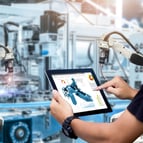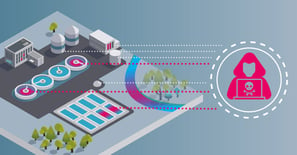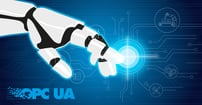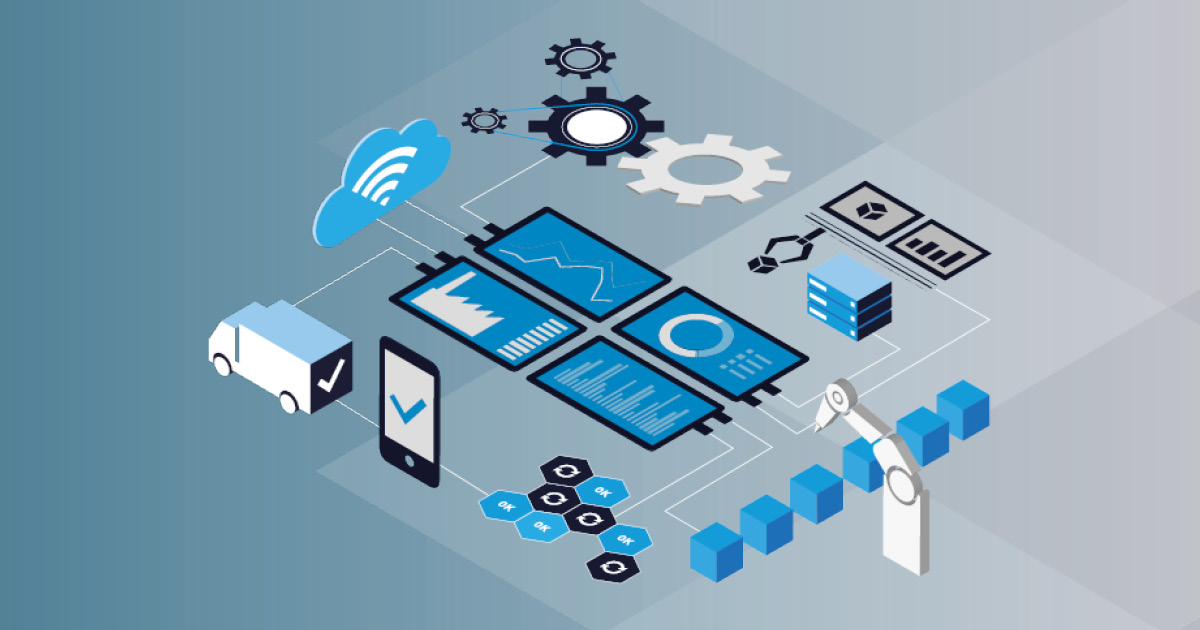Data is at the core of monitoring any environment. And in an industrial IT environment, this data exists in various devices, systems and sensors in the OT, IIoT and IT areas. And for a sound holistic monitoring concept, there are two aspects you need to consider: what data you need, and how you are going to get the data. Let's take a look at both of these points.
Every industrial infrastructure has its own set of requirements for monitoring, depending on how it is set up, the nature of the production process, and so on. In fact, there are many variables that come into play, so there is certainly not a one-size-fits-all approach to recommend. Rather, it all comes down to defining the goals and actions you need to take in your environment. What goal do you need to achieve, and what do you need to know to achieve it?
Knowing your goals will help you define what kind of data you need to get. For example: some goals might require data from across OT, IT and IIoT, while others might require you to retrofit your older machines.
To illustrate this, here are five examples of common goals in industrial IT.
Minimize downtime
 Is anything down right now? This is perhaps the most pressing question when it comes to downtime – you need to know immediately when something is not functioning as it should. But there are other questions related to preventative action: What typically fails and results in downtime, and when? With the right monitoring data, you can understand typical failures, identify patterns over a period of time, and get notifications the moment a device, system or machine is down.
Is anything down right now? This is perhaps the most pressing question when it comes to downtime – you need to know immediately when something is not functioning as it should. But there are other questions related to preventative action: What typically fails and results in downtime, and when? With the right monitoring data, you can understand typical failures, identify patterns over a period of time, and get notifications the moment a device, system or machine is down.
Reduce energy consumption or resource usage
How much energy are devices or machines using? Many devices and machines have their own built-in energy consumption measurements, but others do not. For the latter, you will need a mechanism – such as a power meter – that can send power consumption data to a monitoring system, where the data can be extracted and analyzed.
Optimize production systems
Control systems (like SCADA) and execution systems (like MES) play crucial roles in OT, and thus need to be monitored closely. Ensuring that these systems are up and performing as they should be is crucial in a production environment. Thus you will need to understand their current status and condition.
Ensure the security of the network
 Is the network secure? Is there suspicious or unusual activity in the network? Are my public key certificates about to expire? To ensure the security of the entire industrial infrastructure, the network must continuously be monitored for various issues. Various techniques exist, for example Intrusion Prevention and Intrusion Defense systems, to keep track of what is generating the traffic in the network, and for what purposes. For a good cyber security concept, you will need data from all parts of your infrastructure, across IT and OT.
Is the network secure? Is there suspicious or unusual activity in the network? Are my public key certificates about to expire? To ensure the security of the entire industrial infrastructure, the network must continuously be monitored for various issues. Various techniques exist, for example Intrusion Prevention and Intrusion Defense systems, to keep track of what is generating the traffic in the network, and for what purposes. For a good cyber security concept, you will need data from all parts of your infrastructure, across IT and OT.
Ensure that data flows efficiently to upstream systems
Is the data from sources across the infrastructure making it to the target destination? Is it flowing freely, or are there bottlenecks? Data required for many of the other measurements on this list needs to move from the factory floor to a gateway (for example), and then to an upstream target – perhaps a data center, cloud service, or an ERP system. Components that are unavailable, interfaces that are down, and bandwidth problems can all result in the data not getting to where it is supposed to go.
How to get data from your industrial IT
Once you have defined the data you need for your goals, you can put strategies and solutions in place to obtain it. For this, there are three main aspects you will need to consider: how the data source is connected, what protocols it uses to communicate data, and the security permissions required to access it.
Connectivity
How you access the source – whether it is a machine, control system, or another component - depends on how the devices and systems you need to monitor are connected. This will determine the mechanisms you utilize to get the data. In modern environments, for example, OT could be connected via classic factory LAN systems, industrial WLAN, or even new wireless standards like 5G or LPWAN.
Protocols in the environment
In the OT world, there have historically been several protocols that have served the purpose of communication information on the factory floor – most notably, the FieldBUS protocols. More recently, as industrial infrastructure has become more interconnected, protocols from the IT world have entered the production world. In order to get the data you need, you must be able to communicate using the protocols in your specific environment.
 The rise of standards, such as OPC UA, has helped communication between different systems in heterogeneous industrial environments. However, there is still a great diversity of connectivity and protocols, which is part of the challenge of managing an industrial environment.
The rise of standards, such as OPC UA, has helped communication between different systems in heterogeneous industrial environments. However, there is still a great diversity of connectivity and protocols, which is part of the challenge of managing an industrial environment.
Security clearance
It goes without saying that to be able to access the data source, you need to have the correct security clearance for it. This might mean authentication, having access to the necessary ports, and so on.
Developing a holistic monitoring concept for your industrial IT
Of course, all of the above is strategic, and is only a small part of putting together a monitoring concept. For more information, download our white paper, "Support IT/OT convergence with holistic monitoring", by clicking on the banner below. In it, we cover various considerations for defining a monitoring strategy, including the challenges of monitoring IT and OT, how to visualize your monitoring data, and the importance of notifications and alerts.
 Published by
Published by 












